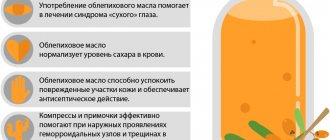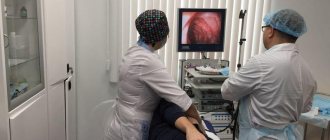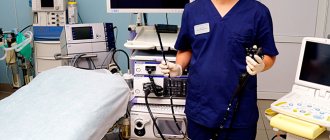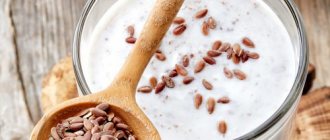Inflammation of the esophagus esophagitis or gastroesophageal reflux disease is an inflammatory disease caused by dysfunction of the lower esophageal sphincter. It is characterized by the return of food from the stomach to the esophagus. If the clinical picture is observed for a long time, it means that esophagitis has entered the chronic stage. Among diseases of the esophagus, esophagitis is diagnosed most often; in 35% of cases it can occur without obvious symptoms. Often, to treat the pathology, it is enough to change the diet, but if the patient has advanced esophagitis, treatment consists of using medications or surgery.
Features of esophageal esophagitis
Depending on the course of the disease, there are 3 types:
- Spicy;
- Subacute;
- Chronic.
Acute esophagitis is divided into 3 degrees:
- Damage to the surface of the esophagus without ulcerative and erosive defects;
- Damage to the organ mucosa with necrosis and ulcerative defects;
- The lesion covers the submucosal layers, causing deep defects and bleeding. Scar structures may form after treatment.
According to the classification of Savary and Miller, chronic esophagitis is divided into 4 degrees:
- First. Hyperemia without erosive changes in the distal sections;
- Second. Small erosions merge, but do not affect the entire mucosa.
- Third. Characterized by the formation of ulcerative lesions in the lower third of the esophagus.
- Fourth. Chronic ulcers and stenosis occur.
In the chronic form of the disease, the mucous membrane of the esophagus becomes loose, swollen and covered with mucus. During a histological examination, the doctor reveals cellular infiltration, atrophy of the esophageal glands with the formation of microabscesses and cysts. Prolonged lack of treatment leads to dysplasia and atrophy of the mucosa with the formation of heterotopic areas of the gastric type. They secrete hydrochloric acid, which leads to the development of Barrett's syndrome.
Based on the nature of the inflammatory process and clinical picture, doctors distinguish the following types of esophagitis:
- Hemorrhagic;
- Catarrhal;
- Necrotic;
- Hydropic;
- Pseudomembranous;
- Phlegmonous;
- Exfoliative;
- Erosive.
Necrotizing esophagitis appears in severe infectious pathologies and agranulocytosis, and is characterized by the formation of deep ulcers.
The appearance of hemorrhagic esophagitis is influenced by some viral and infectious diseases. They cause hemorrhages in the wall of the esophagus.
The most common are catarrhal and edematous forms. They are characterized by hyperemia and swelling of the mucous membrane.
The cause of phlegmonous esophagitis can be a foreign body entering the wall of the esophagus.
Pseudomembranous and exfoliative types of the disease develop with diphtheria and scarlet fever.
Erosive esophagitis occurs due to acute infectious pathologies and the action of irritating substances on the wall of the esophagus.
According to the prevalence of inflammation and its localization, gastroesophageal reflux disease is of 3 types:
- Distal;
- Proximal;
- Total.
Depending on the factor that provoked esophagitis, it comes in 4 forms:
- Nutritional. Occurs when consuming spicy and hot foods and strong alcoholic drinks.
- Allergic. Develops against the background of food allergies.
- Stagnant. Appears when food debris is retained in diverticula
- Infectious. Develops as a result of viral and bacterial infections.
- Professional. Occurs when exposed to harmful production factors.
Prevention
Although catarrhal reflux is not taken seriously by many people, if left untreated it can lead to complications. Inflammation can become chronic or cause bleeding, mucosal necrosis, and narrowing of the esophagus. Therefore, it is necessary to begin treatment of the pathology as early as possible. And to avoid the development of inflammation, follow preventive measures.
This is, first of all, proper nutrition with the exception of spicy, fatty foods, compliance with the temperature regime of food, and prevention of mechanical irritation of the esophagus with hard pieces. It is also recommended to avoid alcoholic beverages, strong coffee, soda, and spices. In the presence of stomach diseases, timely treatment is necessary.
Catarrhal esophagitis in most cases is mild and easily treated. Only if a person does not pay attention to the discomfort and continues to eat food that irritates the esophagus, severe inflammation may develop. The disease can also be severe with reflux disease, so it is very important to treat all gastrointestinal pathologies on time.
Diagnostics
First of all, the doctor analyzes the patient’s complaints. Then he sends him for a general blood and urine test.
To clarify the diagnosis, the following diagnostic methods are used:
- Ultrasound of the abdominal organs;
- Radiography;
- Stomach acidity test;
- Esophagogastroduodenoscopy;
- Impedance measurement of the esophagus;
- CT scan;
- Manometry;
- Scintigraphy;
- Billimetry;
- Breath test for Helicobacter pylori.
In some cases, a histological examination of a biopsy of the esophageal mucosa is required. It is obtained using a targeted biopsy.
If a patient has esophagitis, diagnosis and treatment of the pathology in Moscow can cost him an average of 10,500-50,000, depending on diagnostic methods and type of treatment.
Treatment
Treatment, preventive measures, and diet are selected depending on the cause of the disease. Let's look at a few examples:
- if the causes of the development of the disease lie in infection, therapy begins with taking drugs that cope with it;
- for acid reflux, medication is selected depending on the type of reflux, for example, heartburn medications that suppress acid production;
- If a problem arises due to regular use of medications of a certain group, another drug is selected.
Treatment is performed either conservatively or surgically. Conservative treatment consists of taking medications (prokinetics, alginic acid, antisecretory drugs), physiotherapy (electrical stimulation of the cardia, electrophoresis with novocaine) and laser treatment (endoscopic laser therapy). Surgical intervention is used when conservative intervention does not produce the desired results. To avoid degeneration into oncology, surgical intervention is chosen for Barrett's esophagus, complications in the form of bleeding, and partial pneumonia.
Effective treatment is impossible without a proper diet. The diet is selected depending on what problems provoked the onset of the disease. For reflux, tomatoes, tea, coffee, citrus fruits and chocolate are prohibited. It is recommended to eat small meals, eat non-hot food without pronounced salty, spicy and sour tastes. It is necessary to choose soft foods that will easily pass through the inflamed esophagus.
Some foods can speed up the healing process, including mashed potatoes, rice porridge, oatmeal, buckwheat, egg whites, lean chicken, soups and broths, herbal and green tea.
How to understand that esophageal esophagitis has begun to develop
The severity of symptoms in the acute course of the pathology depends on the severity of inflammation of the organ. In the catarrhal form, esophagitis may not cause symptoms, only occasionally it is manifested by increased sensitivity of the esophagus to cold or hot foods. Severe forms of the pathology are accompanied by severe pain in the chest, radiating to the back and neck, dysphagia due to severe pain, heartburn and increased salivation. In especially severe cases, vomiting with blood may occur, leading to shock. After a week, the patient may feel imaginary well-being and notice the disappearance of unpleasant symptoms, but without proper treatment, after a few weeks, esophagitis will lead to the formation of rough scars and stenosis, which will provoke the progression of swallowing disorders and regurgitation of food.
The main symptom of chronic esophagitis is heartburn, which worsens after eating spicy and fatty foods, coffee and highly carbonated drinks. Overeating can also cause a burning sensation in the epigastric area. At night, the patient may experience regurgitation.
Often other pathologies are associated with esophagitis:
- Bronchial asthma;
- Laryngospasm;
- Breathing disorders;
- Frequent pneumonia.
In children under 1 year of age, esophageal sphincter insufficiency is diagnosed with repeated heavy regurgitation in a horizontal position immediately after feeding. At an older age, children complain of paroxysmal pain in the epigastrium, especially after eating hot food. The pain syndrome intensifies when bending the body, performing physical exercises and at night. Young children are often bothered by nausea and vomiting, while older children are often bothered by heartburn and belching. After waking up, a wet, colorless or yellowish spot may be found on the child’s pillow due to regurgitation. If the disease is not treated in childhood, it threatens bleeding, scarring and stenosis of the esophagus, the development of aspiration pneumonia and anemia.
Symptoms
The specific symptoms of the disease depend on the type, but there are also general signs indicating inflammation of the esophagus:
- pain in the esophagus when swallowing;
- burning behind the sternum, heartburn;
- feeling of a lump in the throat;
- “sour” or “bitter” belching;
- nausea, less often vomiting.
Less common are inability to swallow, increased body temperature, severe general malaise and loss of strength.
Patients also present other complaints: unpleasant taste in the mouth, hoarseness, ulcers on the oral mucosa, pain in the thoracic region radiating to the shoulder blade, collarbone, back, halitosis (bad breath).
Causes of the disease
The development of esophagitis is influenced by the following factors:
- entry of foreign bodies into the esophagus;
- being overweight;
- burns of the esophagus;
- poisoning by chemical and toxic substances;
- alcoholism;
- poor nutrition;
- stomach and duodenal ulcers;
- cholecystitis;
- pancreatitis;
- cholelithiasis;
- damage to the gastric mucosa;
- Zollinger-Elisson syndrome;
- hiatal hernia;
- stomach tumors;
- chronic constipation;
- hereditary predisposition;
- lifting weights;
- stress;
- pathology of the vagus nerve;
- infectious diseases.
In children, acute esophagitis occurs for the same reasons as in adults. At the same time, the risk of developing the disease in children is much higher. It is more often observed in scarlet fever and sepsis, the effect of weak acid solutions on the mucous membrane of the esophagus. Secondary damage to the mucous membrane of the esophagus in children is associated with ulcers, gastritis, gastroduodenitis, cholecystocholangitis and pathologies of other parts of the intestine. In 85% of cases they are diagnosed with superficial forms, in 15% - erosive and ulcerative esophagitis.
Useful video
In this useful video you can learn how to take antacid medications that are used to treat the disease.
The benefits of physiotherapy
As an additional method of therapy, attending physicians always prescribe physical therapy. Carrying out these procedures contributes to:
- regeneration of tissue damage;
- reducing the inflammation process;
- improvement of local defense mechanisms;
- increased blood flow in the gastrointestinal tract;
From an extensive list of physiotherapeutic measures, amplipulse and information wave therapy , electrophoresis with ganglion blockers , UHF and short-pulse electrical neurostimulation .
But it is imperative to remember that if there is bleeding or ulcerative formations in the esophagus or stomach, physiotherapy is strictly contraindicated.
Non-drug treatments
Superficial distal esophagitis, which is at the beginning of its development, responds well to treatment using folk remedies and diet. At this time, it is enough for a sick person to adjust his diet, get rid of bad habits (smoking, alcohol abuse and a tendency to overeat), and if unpleasant sensations occur, use herbal decoctions . This will help not only relieve the symptoms of the onset of the disease, but also prevent it from progressing.
It should be noted that all recommendations on dietary nutrition and the use of herbal infusions can only be given by a doctor who, based on the results of a diagnostic study, has seen the true picture of the condition of the mucous membrane of the distal esophagus.







